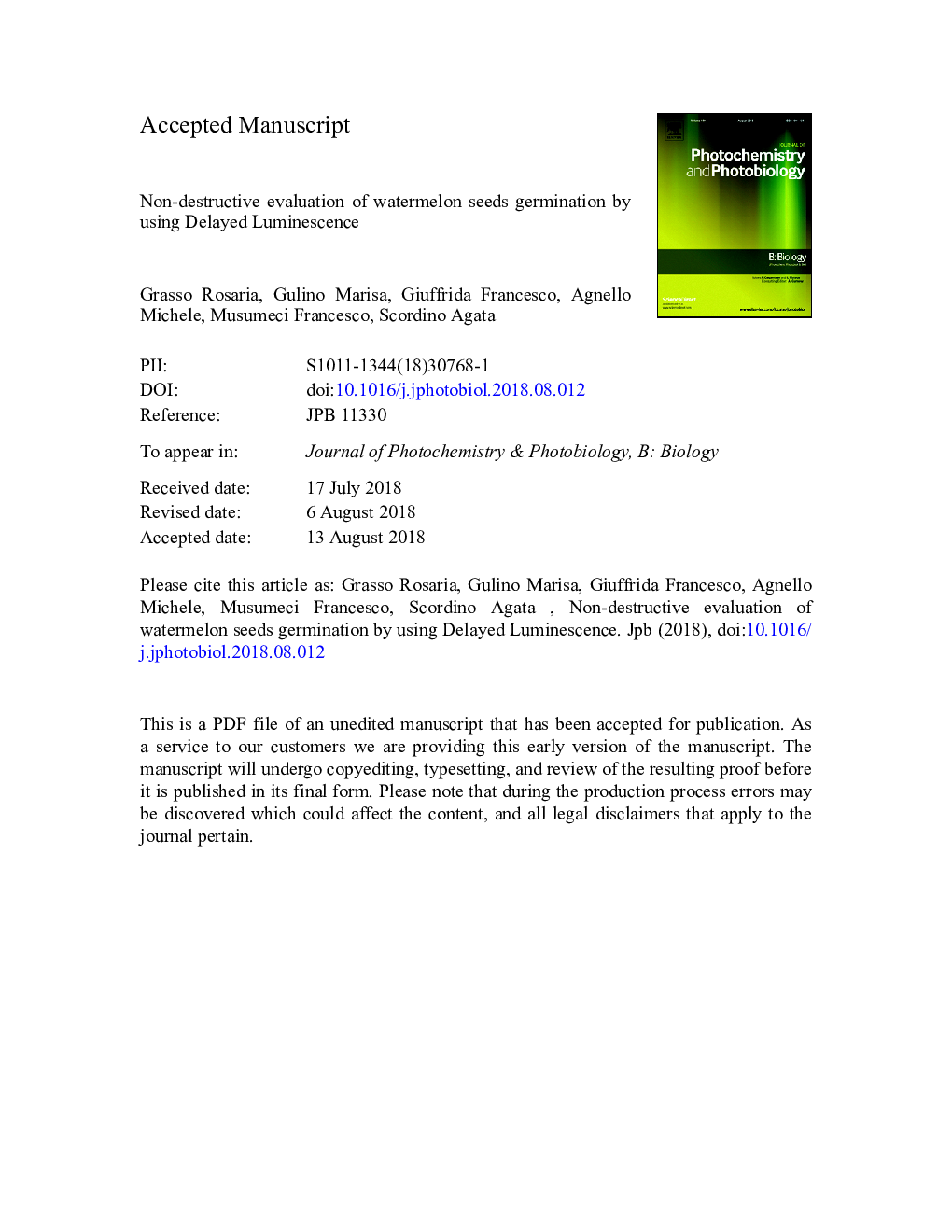| Article ID | Journal | Published Year | Pages | File Type |
|---|---|---|---|---|
| 10999827 | Journal of Photochemistry and Photobiology B: Biology | 2018 | 17 Pages |
Abstract
The evaluation of optical properties of biological samples is gaining increasing interests both in scientific and commercial fields concerning agriculture and food processing. The optical techniques can indeed be able to provide information on quality assessment in a fast and non-destructive way. This feature makes them suitable for automatic management of control processes. In this paper, we propose to use the Delayed Luminescence, a ultra-weak and photo-induced emission of optical photons, as a tool for a rapid evaluation of germination performance, the principal index reflecting seed quality. Two lots of 'Mirella' F1 watermelon dried seeds, of 96 seeds each, were considered. The seeds were analyzed in the conditions as provided by seed/breeding company. Characteristics of Delayed Luminescence emission from each single seed were correlated to the different germination levels as assessed by International Seed Testing Procedures. Parametric differences in the two lots were determined, based on the relaxation kinetics of some spectral components. A control test, with the aim to construct a calibration model, was conceived and successfully tested. Time decays of Delayed Luminescence spectral components at central wavelengths 450â¯nm, 550â¯nm and 650â¯nm, corresponding to spectrum region where natural biomarkers as NADH, flavins and lipopigments, protoporphyrin and ROS respectively emit, have been evaluated. The results show that such time decays are strictly connected to the biological state of the system under analysis and allow also proposing Delayed Luminescence measurement as a quick, cheap and non-destructive test for seed viability analysis.
Related Topics
Physical Sciences and Engineering
Chemical Engineering
Bioengineering
Authors
Rosaria Grasso, Marisa Gulino, Francesco Giuffrida, Michele Agnello, Francesco Musumeci, Agata Scordino,
